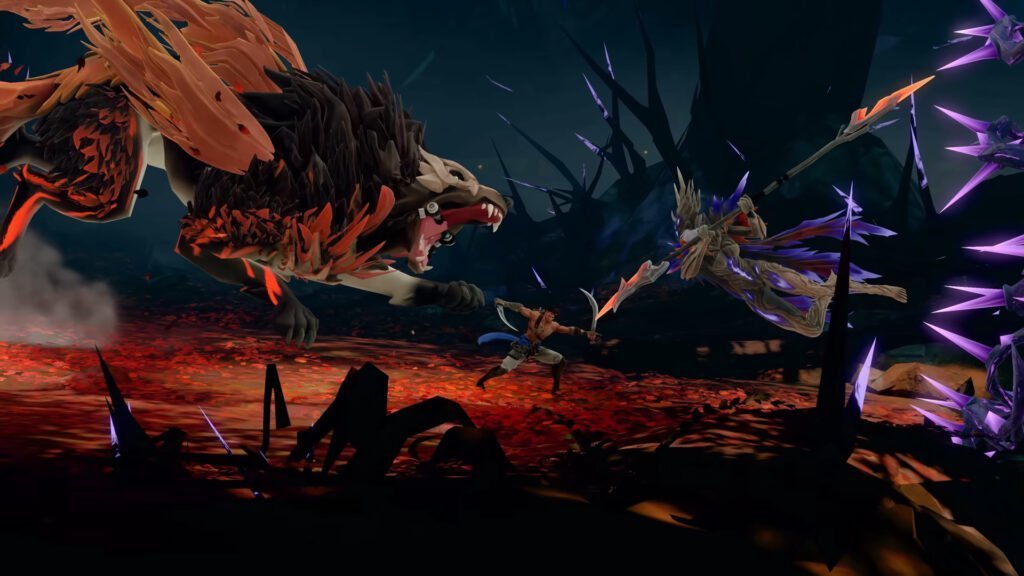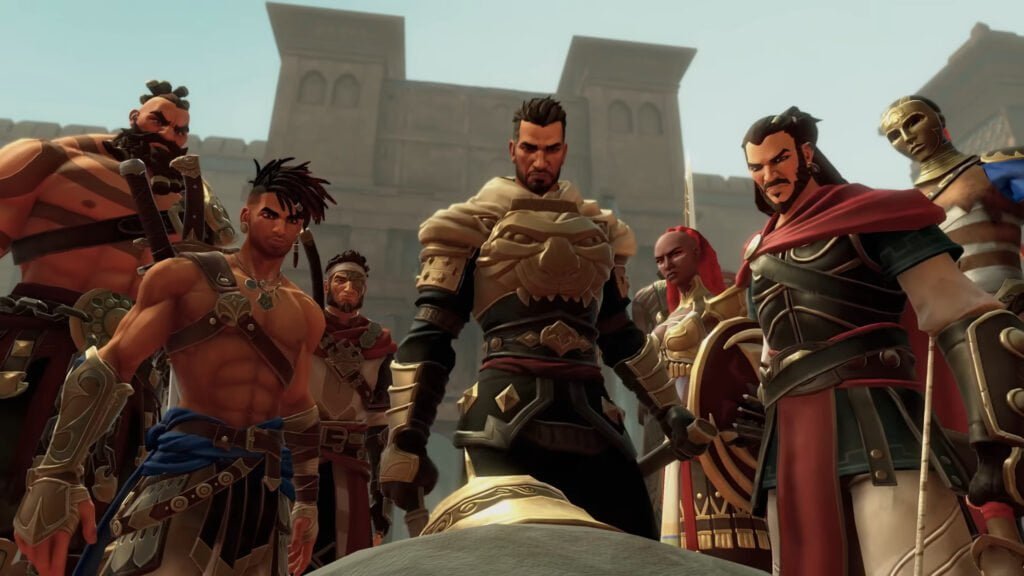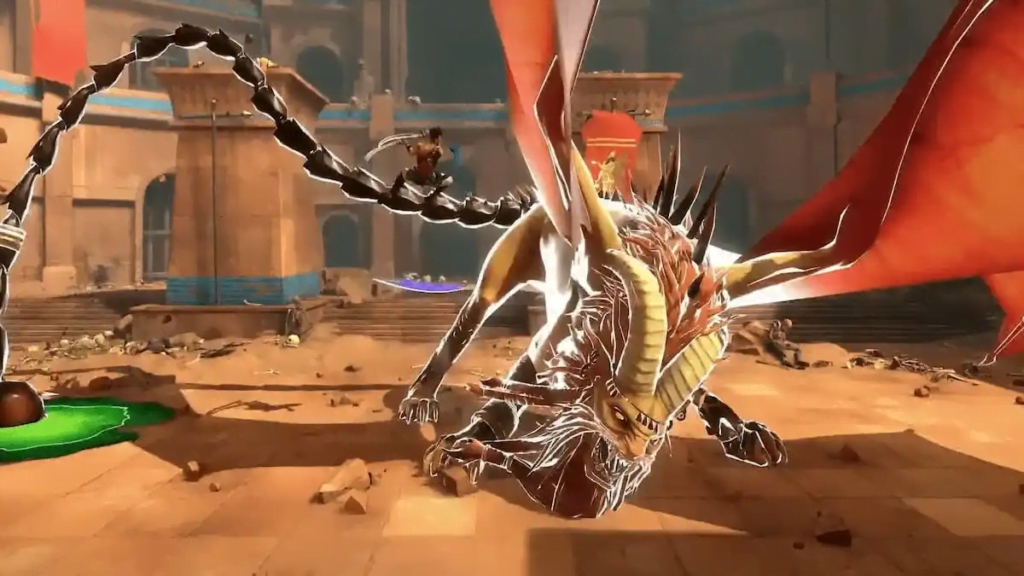The fact that Prince of Persia is still a known quantity nowadays speaks volumes for how much of an impact those games have had in the industry as a whole. It’s been nearly 14 years since the last entry came out, and in my mind, it feels like the type of game that these tend to get grouped with has hardly changed.
That’s especially so for Prince of Persia: The Lost Crown, the first Prince of Persia to come out this century. It’s easily one of the best in its genre of gaming, the one which I absolutely loathe to qualify with its portmanteau name – you know the one, if you’ve been reading my reviews for a while – a definite mainstay for as long as there hasn’t been a new game in the series for sure.
Developed by the same team as the criminally overlooked Rayman Legends and Rayman Origins at Ubisoft, Prince of Persia: The Lost Crown is a soft reboot of sorts for the series, as it tells the story of a group of persian warriors known as the Immortals, and how the titular prince is thrust into the middle of a conspiracy that aims to shake the very foundations of his kingdom.
You play as Sargon, the youngest member of that group, someone with a conspicuously mysterious past who finds himself stranded in Mount Qaf, along with his fellow fighters, as they chase after an apparent traitor who’s kidnapped the prince. Qaf is a weird place as time doesn’t flow as it should there, and that weird reality is the basis of the entire adventure in The Lost Crown.

In fact, time dictates just about every aspect of this game. The powers you acquire all deal with shifting through and controlling the flow of time, and the emphasis of the story is that you’re desperately looking for a way to rewind it and do things differently. On the way, you get glimpses of what’s assumed to be Sargon’s backstory, and concurrently, visits from alternative reality, especially his own.
It all works to The Lost Crown’s benefit, thanks to how creative the developers managed to be in coming up with new traversal and combat skills that do a tremendous job at skewing away from the usual flavors of powers that are usually dolled out in this sort of game. Obviously, there’s a double jump, but besides that one particular skill, there are very clever spins on the old formula.
Thanks to these, it makes for an entertaining growth process, one that carries through quite well for the 20 or so hours that the game will last you, plus 10 or more if you look at every nook and cranny of the map. The progression feels great and the game does a fantastic job at helping you keep track of where you can come back to through a screencap feature that places a dot on the map with a picture to help you remember what obstacle it relates to.
Then again, you’re welcome to also pick from a set of icons to dot around as well, or, if you’re absolutely nuts, you can go the other way and just not use a map at all, having to rely purely on environmental tells to navigate through the world. I for one can’t imagine playing this without any sort of help, even more so because of the sheer size of the world, but the option is there if you wanna give that a whirl.

As for combat, Prince of Persia: The Lost Crown plays very decently. You can parry incoming attacks as long as they’re not unblockable – and even so, there’s a power-up that allows you to do so regardless. It’s not incredibly difficult to time either thanks to the generous timing window that is just large enough but not exaggeratedly so.
There are also a host of knicknacks to equip that can help you spec Sargon to your liking, focusing on amping a wide range your skills, such as allowing you to build up the special move meter more quickly, or doing away with it entirely in favor of making your ranged attacks even more potent. It’s a neat system to play around with and it’s not at all too costly to do so, unless you choose to upgrade these items. Weapons can also be further upgraded by spending minerals you come across in the form of treasure.
The best part of the game, though, has got to be the platforming. Given the game’s pedigree, I can’t say I’m surprised by the fact that it’s so good since the Rayman games are incredible platformers. What I am shocked by is how challenging the traversal puzzles in The Lost Crown can get. They are some of the toughest I’ve seen in a modern day side scrollers and I am glad for them as they are mostly very rewarding to tackle, requiring precise inputs that make brilliant use of the movement mechanics in the game.
In a nod to Prince of Persia: The Sands of Time, one of Sargon’s early powers is a form of wallrunning, but considering that this is a 2D game, it’s put to use in a creative way, because it can be pulled off in the air, without the need of said wall. And it comes in handy during combat, adding a welcome extra layer of complexity to those proceedings that I came to appreciate the closer I came to the game’s closing combat encounters.

Now, for as good as every individual part of this tends to be, I do have some caveats about its trappings within its genre. One gripe is related to backtracking: there’s way too much of it during specific moments of the story. One instance, in fact, kept me from making much progress thanks to the confusing makeup of a part of the game’s world, with each room looking the same as the one before it. To make matters worse, the map feature is taken away during this particular spot, which put a damper on my playthrough.
Another issue that might pop up in your own go at this is how some animations during combat tend to take too long to carry through. Such is the case of boss special moves that, unless dodged or parried, can drain a huge chunk of your health bar. While I appreciate the style in which these are displayed, taking cues from anime and making it all fairly exaggerated, I grew tired of them during repeat attempts upon dying to said bosses.
Outside of those relatively small complaints, I come away from The Lost Crown rather impressed with how it turned out. I can count on one hand the times I’ve had a great time partaking in games of this particular genre and I haven’t enough fingers and toes to list the ones I got tired of. It’s a common design style that suits the indie scene quite often, to the point of getting stale.
But Prince of Persia: The Lost Crown doesn’t overstate it at all. Outside of having to go through the same steps as your usual one of these, the mix between combat and traversal segments is perfectly suited to its progression rhythm, and how new powers and weapons are dolled out to you. The folks at Ubi are to be commended for making me care about the story as well, which is at the top of the list of things I wasn’t expecting to give much thought to when playing this.

In terms of presentation, there’s a lot going for this game. Firstly, it’s extremely colorful and busy, but at the same time it’s got simpler polygonal models and somewhat rigid animation. That helps keep it relatively light in terms of required specs to run it on PC, and thanks to that, I was able to play it without any drops in performance all throughout my review.
When it comes to sound, it’s worth mentioning that the English voice acting is very hit or miss. One case in particular is particularly weak, but it’s relatively contained, so you won’t have to suffer through it long. It’s also cool that there’s a Persian (Farsi) option for the read dialog – I always get a kick of options like that. Music-wise, it’s your usual flavor of choirs and strings with some more rocking themes thrown in for good measure.
Prince of Persia: The Lost Crown is an exciting addition to the admittedly crowded market in its particular style of play, but it’s one that does enough of its own flavor and delivery that makes it very much worth playing. That’s all too true for those who’ve enjoyed Prince of Persia in the past thanks to its ties in design to the classic games of the past in the form of traversal, and to some degree, some of its combat encounters. For as limiting as these games can be simply due to the tenants of the genre, there’s enough here to make this one stand out from the pack.





